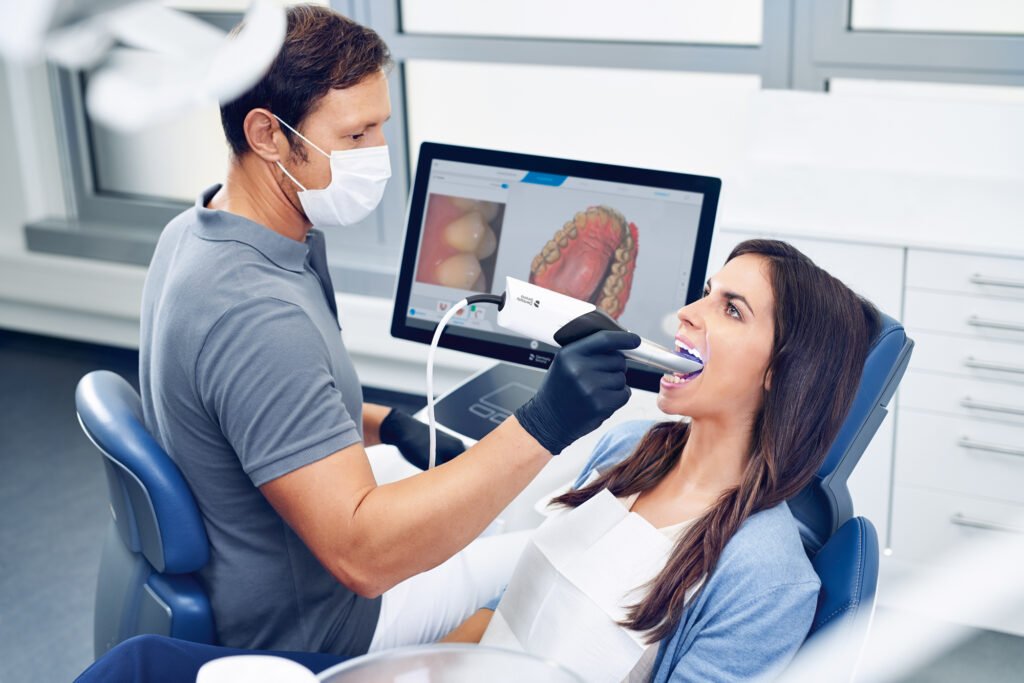Intraoral scanners have changed the game for restorative dentistry, offering speed, accuracy, and comfort. For crown and bridge restorations, digital workflows are now standard in many Canadian practices. But when it comes to removable prosthetics, traditional methods still dominate.
So why is intraoral scanning more popular for crown and bridge than for dentures and partials? At First Dental Studio, we help practices understand when to use digital techniques—and when conventional methods may still be the better fit.
Why Crown & Bridge Is Ideal for Digital Workflows
Crowns and bridges require detailed, precise impressions of prepared teeth, margins, and occlusion. Intraoral scanners excel in these situations, capturing fine details in hard tissue with accuracy levels as precise as 10 microns.
Key Benefits:
- No messy materials or trays
- Instant digital file transmission to the lab
- Fewer remakes due to margin distortion or shipping issues
- Shorter appointments and less chair time
With scanners like the TRIOS by 3Shape, dentists can complete crown and bridge scans in minutes and submit directly via our digital portal.
Why Removables Are More Complex to Scan
While digital tools are improving, scanning for removable prosthetics—especially full dentures—is more technically demanding. That’s because scanners have difficulty capturing soft tissue movement and compression.
Challenges with Removables:
- Need to capture mobile tissue areas (frenum, vestibule, soft palate)
- Functional dynamics (border molding, pressure points) can’t be scanned
- Difficult to scan edentulous arches where landmarks are minimal
In these cases, functional impression techniques using conventional materials still provide the best chance for long-term fit, retention, and stability.
Why scanners struggle with soft tissue – Journal of Prosthetic Dentistry
Hybrid Workflows: Bridging Digital and Traditional
While fully digital removable workflows aren’t yet universal, hybrid approaches are growing. For example:
- Take a traditional functional impression
- Scan the physical model or impression tray
- Proceed digitally with design and 3D printing
This lets us maintain the clinical accuracy of conventional impressions while using digital design tools to fabricate faster and with fewer errors.
At First Dental Studio, we frequently use this workflow for:
- Complete dentures
- Implant-supported overdentures
- Cast partial frameworks
The Future of Digital Removables
New technologies are closing the gap. Tools like photogrammetry, facial scanning, and advanced intraoral scanners with AI-driven algorithms are pushing digital removables forward.
What’s Coming:
- More reliable scans for edentulous arches
- Faster adjustments using digital reline workflows
- Improved patient comfort with fewer adjustment appointments
Leading practices in Canada are already incorporating these tools—and labs like ours are ready to support you with training and integration guidance.
Why Partnering with the Right Lab Matters
Choosing a lab experienced in both digital and conventional workflows is key. At First Dental Studio, we guide dentists through:
- What cases are ideal for scanning
- When to use a hybrid or traditional approach
- File review and margin verification
- Design feedback for improved retention and comfort
With our full-service team, you won’t need to guess—we’ll support every step, whether it’s a full arch scan or a border-molded tray.
Want to Explore Digital for Removables?
While crown and bridge scanning has become the norm, removable prosthetics are catching up fast. With the right tools and support, your clinic can start offering faster, more accurate removable cases—without sacrificing clinical control.



